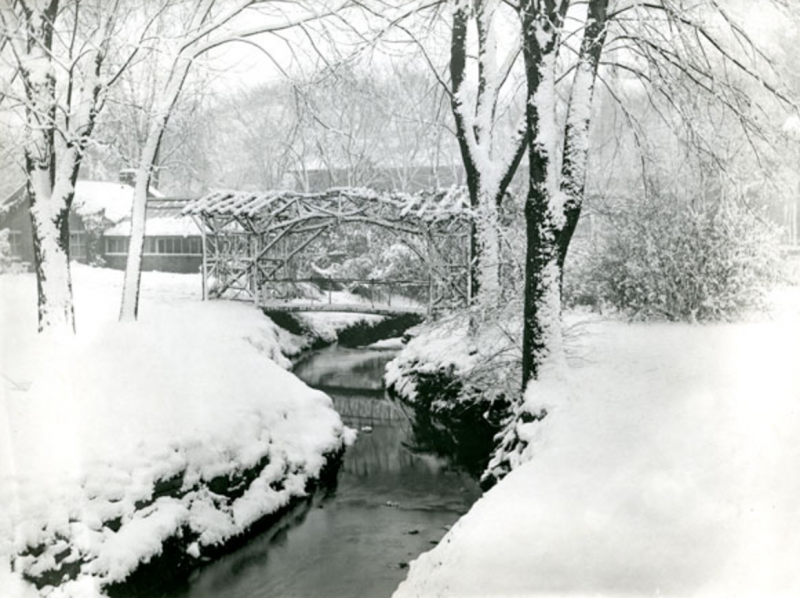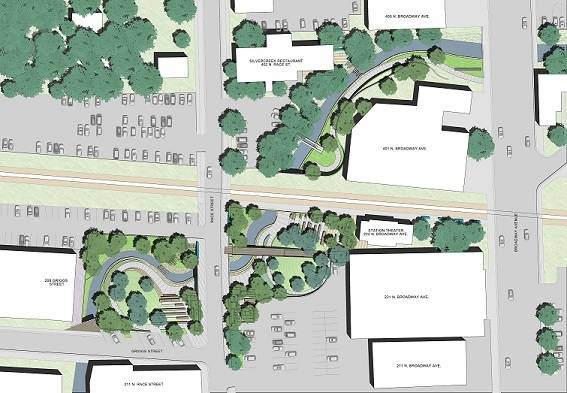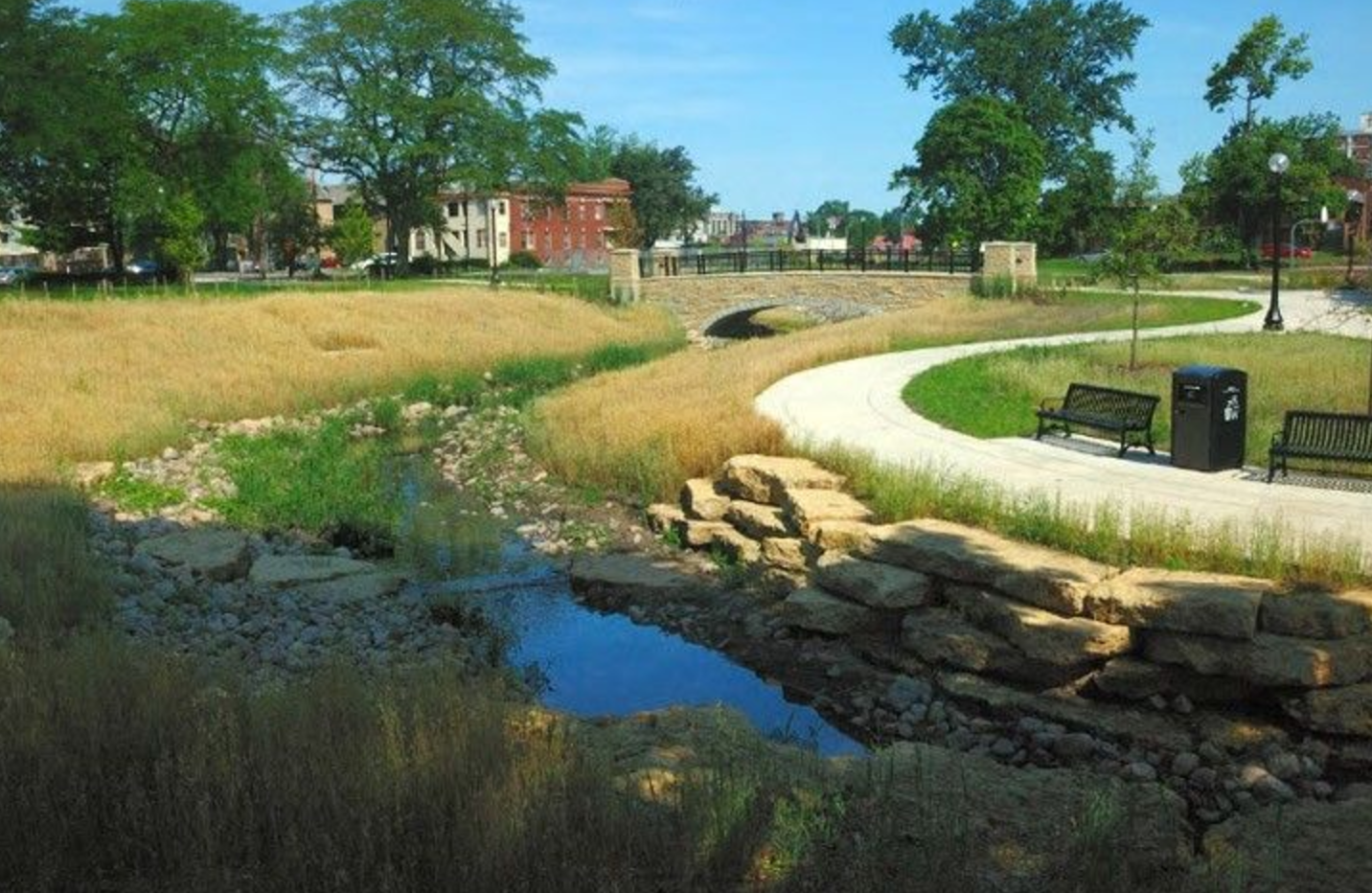Imagining Champaign-Urbana without Boneyard Creek is much more difficult today than it was a few decades ago. Today, the Boneyard is the centerpiece of Champaign’s urban oasis known as the Second Street Basin, a defining feature of the University of Illinois’s Bardeen Quadrangle, and the impetus for the creation of the Boneyard Riverwalk in Downtown Urbana. However, as recently as the 1990s, the creek was a hidden utility, rather than a public amenity. To understand how the creek will shape Champaign-Urbana’s future, one needs to know how C-U disregarded it.
In the early years of C-U, the Boneyard was a defining feature of the twin cities, which is otherwise devoid of many noticeable geographic features. The waterway decided the winner of tug-of-war competitions, allowed for swimming, and hosted numerous other strange, turn-of-the-century UI traditions.

Despite its importance to student life, a collection of buildings began to clutter the creek as it passed through campus on the north side of Green Street, channelizing and capping it in the process. From the early 1900s, the Boneyard was deemed a polluted eyesore; reports of gas pollution and foul odors date back to as far as 1915. Students began to shy away from creek-related activities (though tug-of-war continued for quite some time into the 1930s), and the creek was hidden in the process. Many developers found it cheaper to cap the creek and build above it than to spend more money and exert more energy trying to accommodate it. Some of the creek’s wooded banks were replaced with vertical metal and concrete retaining walls, its bottom replaced by concrete. Outside of campus, where it wasn’t already capped, barbed wire fencing prevented entry and sought to reduce the risk of someone falling in and being subsequently trapped. Between Healey and Green Streets in Campustown, the creek was little more than a drainage ditch surrounded by restaurant dumpsters and trash-strewn shrubs.
More impermeable infrastructure combined with growth in the campus area and C-U at large created a perfect storm for more frequent, more damaging flooding. The flood of 1979, which damaged millions of dollars of property, was one of C-U’s loudest wakeup calls. Intense flooding (like canoeing down Green Street intense) regularly overloaded the drainage system in the coming decades. Even when we tried to forget the Boneyard, it forced us to remember. Champaign and Urbana planners devised ways to better protect nearby properties. Urbana created the Boneyard Creek overlay district in 1979 to ban water-inefficient properties in the vicinity of the waterway; this strategy was twofold, as it also encouraged more lively and dense uses around the creek in order to realize a creek-centric destination of a district, which was a planning tactic far ahead of its time.
In 1993, a flood halted the construction of UI’s Grainger Library and effectively shut down the University for some time, causing millions of dollars of damage. By 1996, Champaign sought to tackle the flooding and Urbana, in tandem, acted on their 1979 Plan for Boneyard Creek. A detention basin was built near Locust between Green and Springfield in Champaign. The Boneyard was capped through Campustown due to spatial constraints and now the Boneyard Greenway path runs above it. The Bardeen Quad was created in 2004, clearing the creek from urban clutter, the multi-purpose (detention basin, habitat, and public park) Second Street Basin opened in 2012 creating environmental rehabilitation and urban renewal, and the first phase of Urbana’s Riverwalk opened in 2015. These projects use green space and plantings to help reduce flooding while adding capacity for overflow and adding lively spaces in the process. Not only has access improved, but so has water quality. Fish are no longer a rarity in the tiny stream.

As shovels dig in to create another basin-park combo at Glenn Park in West Champaign, renewed interest in the Boneyard and waterways in general seems to be the shape of things to come. Piecemeal, bit by bit, Champaign-Urbana is conquering its flood problem and receiving habitat restoration, public space, and investment as the reward.
Find out more about the future of C-U’s hometown creek using the links below!
UI’s Boneyard Creek Project:
http://guides.library.illinois.edu/boneyard
View Urbana’s Boneyard Master Plan here: http://www.urbanaillinois.us/departments/public-works/about-public-works/engineering/boneyard-creek-master-plan
Images from Hitchcock Design Group, City of Urbana, and the University of Illinois Archives








